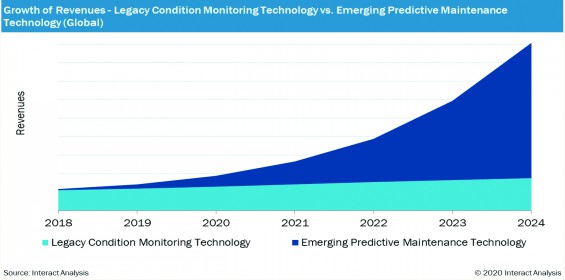Software as a Service will revolutionise predictive maintenance
Published: 15 June, 2020
A new report on the market for predictive maintenance has highlighted the potential for a new relationship between component manufacturers, OEM machine builders, and end users. PWE reports.
The forecast boom in the sector will be propelled, according to a report by Interact Analysis, by the emergence of smart sensors able to monitor crucial parts of a motor-driven system that are not covered by legacy maintenance devices and methods. Advanced smart sensors will allow delivery of viable cloud-based predictive maintenance service packages using a SaaS business model.
The report shows that the market for predictive maintenance in 2019 was $117.5 million, largely made up from legacy predictive maintenance products such as portable monitoring devices. Many of these devices will maintain strong growth in the coming decade but will be used in tandem with new technologies such as smart sensors, the latter fuelling an expected boom in market value of predictive maintenance technology, up to almost $1 billion in 2024. The significant fall in price of the capacitive based microelectromechanical systems (MEMS) found in Smart Sensors will be one of the drivers of this market.
Smart sensors, which typically monitor sound, temperature, and vibration, may not provide the depth of data offered by some legacy devices, but they have significant advantages. Whereas most legacy devices are attached to motors, IA predicts that only 53% of smart sensors will be attached to motors by 2024. The rest will be attached to other machine components, which are also subject to the wear and tear of daily use. This means that the application of predictive maintenance will be far more widespread in the factories of the future.
Blake Griffin, lead analyst on predictive maintenance at Interact Analysis, commented that smart sensor technology coupled with IIoT capabilities give component manufacturers and OEM machine builders the scope to offer end users an anticipatory service package. For most providers of predictive maintenance, he explains that the logical business model will be software as a service. A side benefit of Software as a Service (SaaS) is that it ties all technologies together under a single solution – thereby eliminating concerns regarding data ownership. Additionally, Griffin says advancements in embedded machine learning will improve the ability for predictive maintenance to be installed in new or non-standard applications that are less well understood, further fuelling growth.
For further information please visit: https://www.interactanalysis.com/







